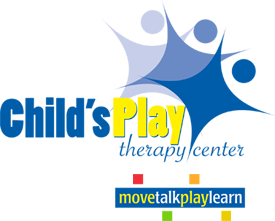Is AAC Right For My Child?
Written By: Alia Shoemaker, MS, CCC-SLP What Is AAC? Augmentative and Alternative Communication (AAC) refers to any way a person can communicate apart from vocal speech. This might include: Unaided AAC Aided AAC When your child’s SLP refers to AAC, they are most likely referring to Aided AAC. Who Can Benefit from AAC? All people […]
Why Won’t My Baby Eat?
Written by: Martha Davis, M.S., CCC-SLP Helping your baby transition from liquids to solids is a common stressor for parents. In typical development, the transition between bottle or breast to purees/solids is fairly smooth. There may be some gagging or refusal, but after a short period of time (a couple of weeks), they get the […]
Language Processing
Written by Anna Woodfin, Speech-Language Pathologist Did you know that there are different types of language development? As an SLP working with younger children who are not talking or talking very little, this is something that I regularly think through about my clients. One type of language development or processing is called “Analytic Language Processing.” […]
Four Practical Tips for Screen Time with Your Toddler
By: Rachel Evans, Speech-Language Pathologist In today’s tech-savvy world, we are inundated with screens. From smart phones and tablets to computers and TVs, these devices have made their way into the fabric of our daily lives. For children, a myriad of apps, games, and shows are right at their fingertips to consume. Since the onset […]
Minimal Pairs

Minimal pairs are words that differ by only 1 phoneme (sip dip). It is a quick way of helping your child break the habit of substituting 1 sound for another sound. The goal of using minimal pairs is to help your child understand how they say the word determines the meaning. Ask your speech therapist for minimal pair resources! -Shelley Zepp,SLP
Attachment Building at Home

As we have all learned over the past year of social distancing, relationships with other people are incredibly important. This is even more true for our children and teens. From day one, we all start building attachments with those around us: caregivers, family, friends, etc. Those relationships help us to learn about ourselves and the world […]
Seating Tips for Virtual Learning

Proper seating and positioning is essential for learning. Check out these tips from our physical therapists, Lacey Ellis and Laura Lee, to help get the most out of your child’s virtual learning experience. Lacey Ellis, PT, DPT Laura Lee, PT, DPT
The Orton-Gillingham Approach to Reading Instruction

Does your child struggle to read? Does he confuse letters and sounds or seem to know them one day and forget them the next? While learning to read and write comes naturally to many children, some need specific, direct instruction in order to gain these skills. This instruction can be provided as a supplement to […]


